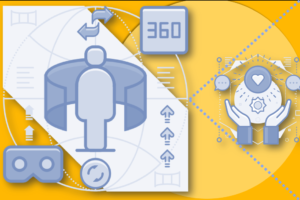Virtual Reality in Education: Focus on the Role of Emotions and Physiological Reactivity
 Cognitive and emotional dimensions are often linked to each other in learning experiences. Moreover, emotions and engagement can lead to better outcomes at the cognitive level. Previous research has indicated that virtual reality (VR) provides a feeling of presence and immersion, which can trigger emotionally engaging learning situations. In this study, we explore the opportunities and challenges related to the use of VR in an educational context. The focus of this article is threefold: First, we explore interdisciplinary research literature related to the use of VR for educational purposes. Second, we introduce our VR pilot study in teacher education, applying three different kinds of VR applications. During the pilot study, we utilized physiological measurements, the self-assessed experience of emotional involvement (PANAS; Watson, Clark, & Tellegen, 1988) and students’ qualitative reporting on VR experiences. Third, we discuss the potential of brain imaging methods such as EEG measures for capturing learning, performance, and emotions in VR and offer pedagogical guidelines for the future design of VR environments.
Cognitive and emotional dimensions are often linked to each other in learning experiences. Moreover, emotions and engagement can lead to better outcomes at the cognitive level. Previous research has indicated that virtual reality (VR) provides a feeling of presence and immersion, which can trigger emotionally engaging learning situations. In this study, we explore the opportunities and challenges related to the use of VR in an educational context. The focus of this article is threefold: First, we explore interdisciplinary research literature related to the use of VR for educational purposes. Second, we introduce our VR pilot study in teacher education, applying three different kinds of VR applications. During the pilot study, we utilized physiological measurements, the self-assessed experience of emotional involvement (PANAS; Watson, Clark, & Tellegen, 1988) and students’ qualitative reporting on VR experiences. Third, we discuss the potential of brain imaging methods such as EEG measures for capturing learning, performance, and emotions in VR and offer pedagogical guidelines for the future design of VR environments.







